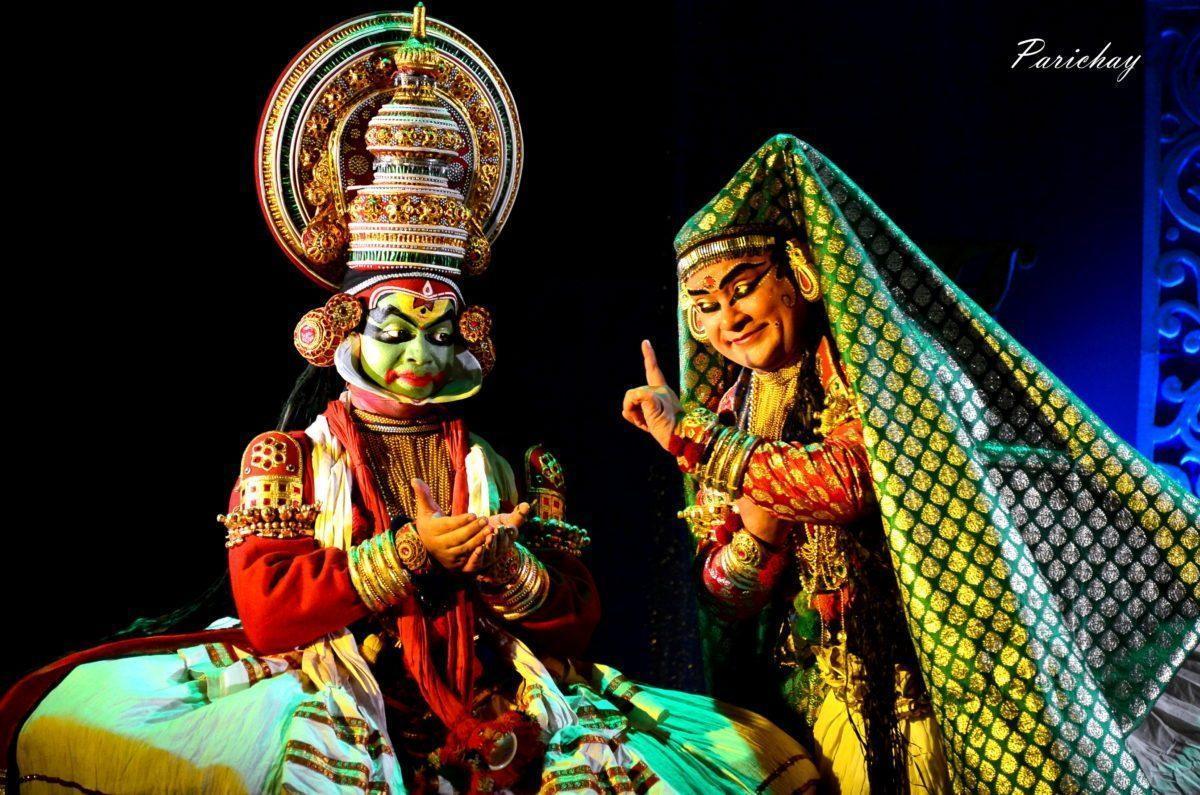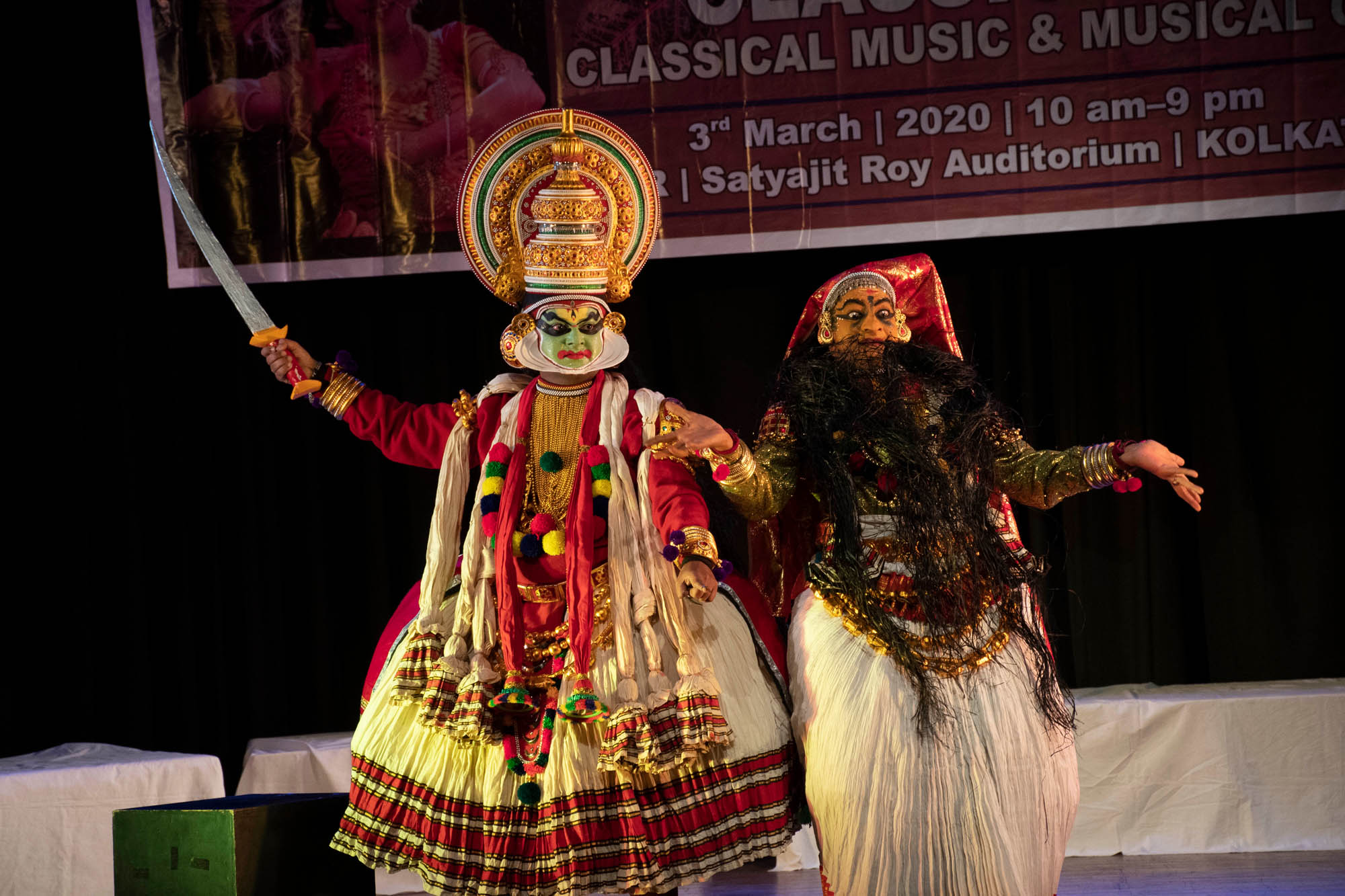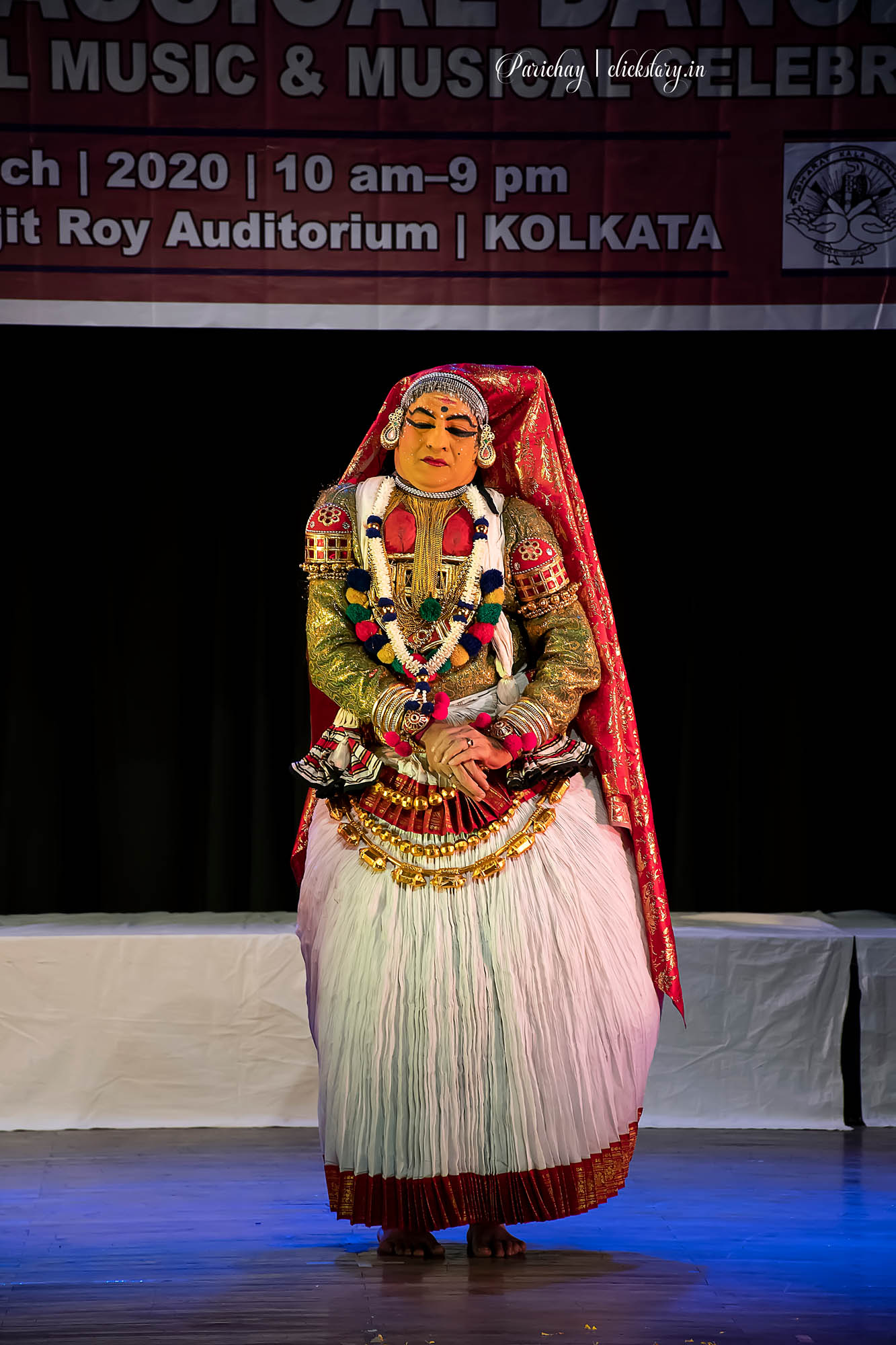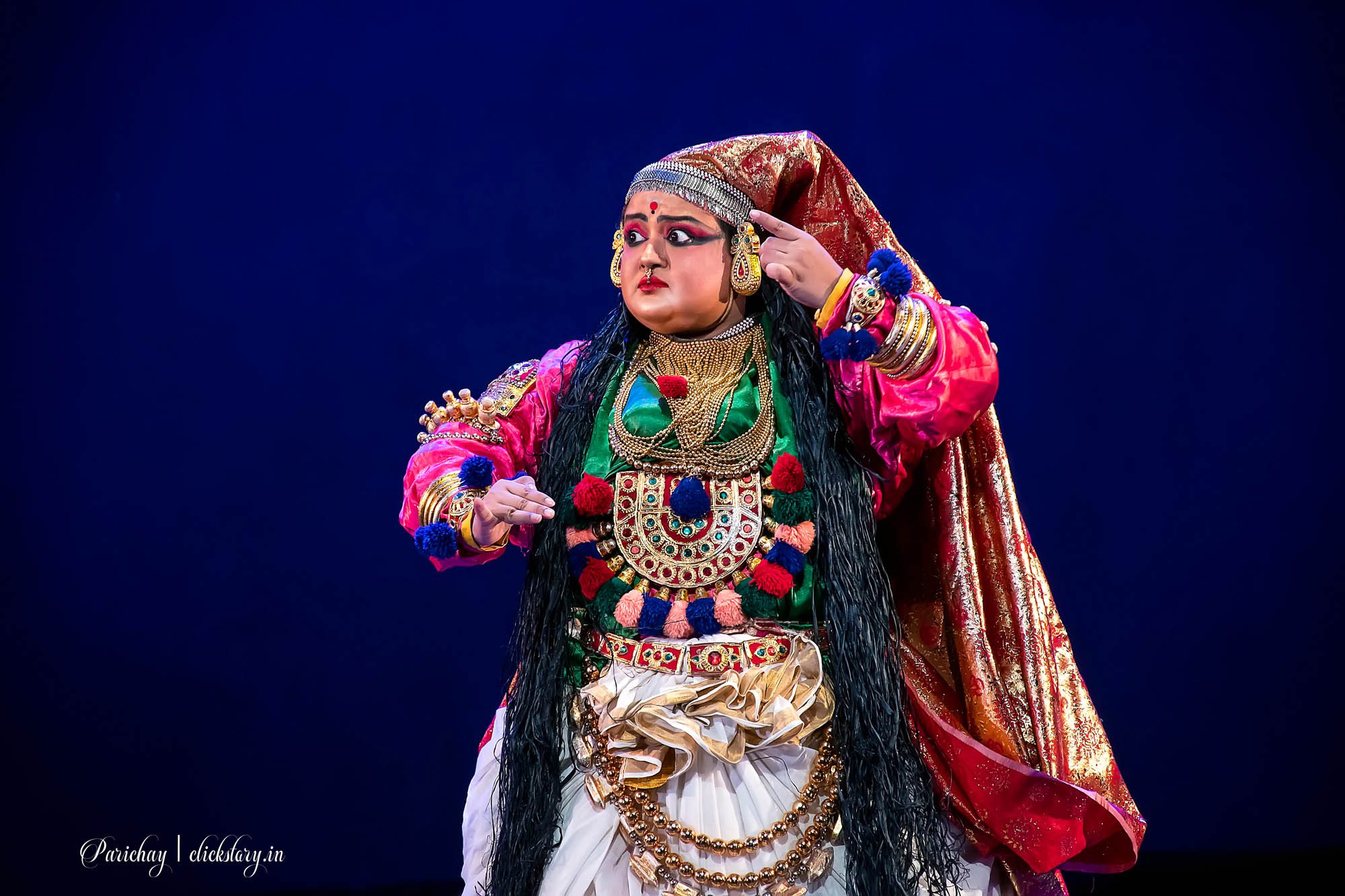Kathakali is one of the oldest theatre forms in the world. It originated in the area of southwestern India now known as the state of Kerala. It is a group presentation, in which dancers take various roles in performances traditionally based on themes from Hindu mythology, especially the two epics, the Ramayana and the Mahabharata.

One of the most interesting aspects of this dance is its elaborate make-up code. Each Character has different make up according to their nature. This determines the colours used in the make-up. The faces of noble male characters like great kings, the divine hero Rama, etc. are green makeup. Characters who are high evil streak, such as the demon king Ravana, are allotted a similar green make-up but with red marks on the cheeks. Extremely angry or excessively evil characters wear red make-up and a flowing red beard. Forest dwellers such as hunters are represented with a black make-up base. Women and ascetics have yellowish faces.

Hand gestures in Kathakali
The technique of this dance is a highly developed language of hand gestures. the artist can tell the whole sentences and stories through hand gestures. The body movements and footwork are very rigorous. A dancer undergoes a very hard course of training, and special periods of body massage.
Makeup and costume in Kathakali
The dancers wear large head dresses and different colours of the face are extended with molded lime. The extraordinary costumes and make-up transform the audience to a world of wonders.
The orchestra of a Kathakali performance includes two drums known as the chenda and the maddalam, along with cymbals and another percussion instrument, the ela taalam. Normally, two singers provide the vocal accompaniment. Sopanam is the style of singing.
A traditional Kathakali performance begins in the evening and continues throughout the night, when Good finally conquers Evil. Today, however, it has been modified for the proscenium stage, and the audiences can participate in this theatre experience in the span of a couple of hours.
Musical instruments in Kathakali
Chenda, Maddalam, Cymbals and Elathalam










thanks for the information